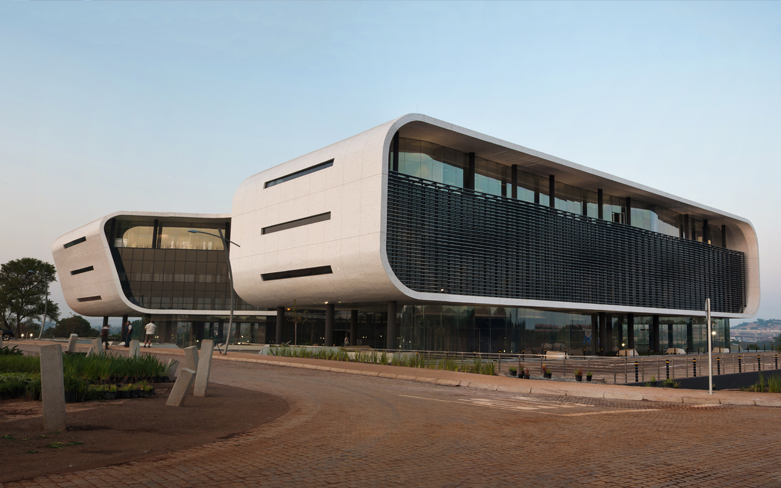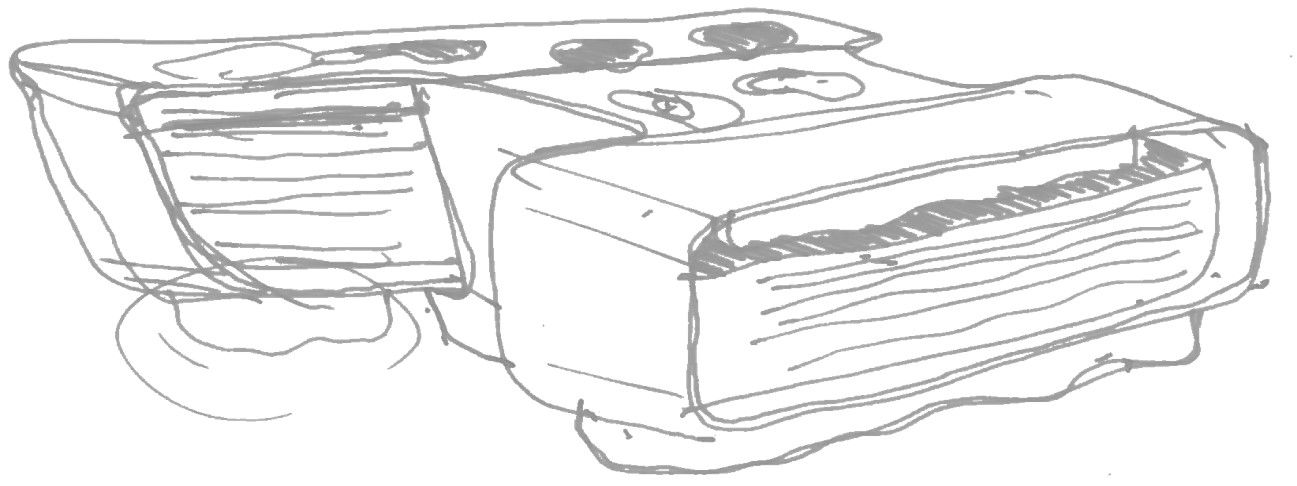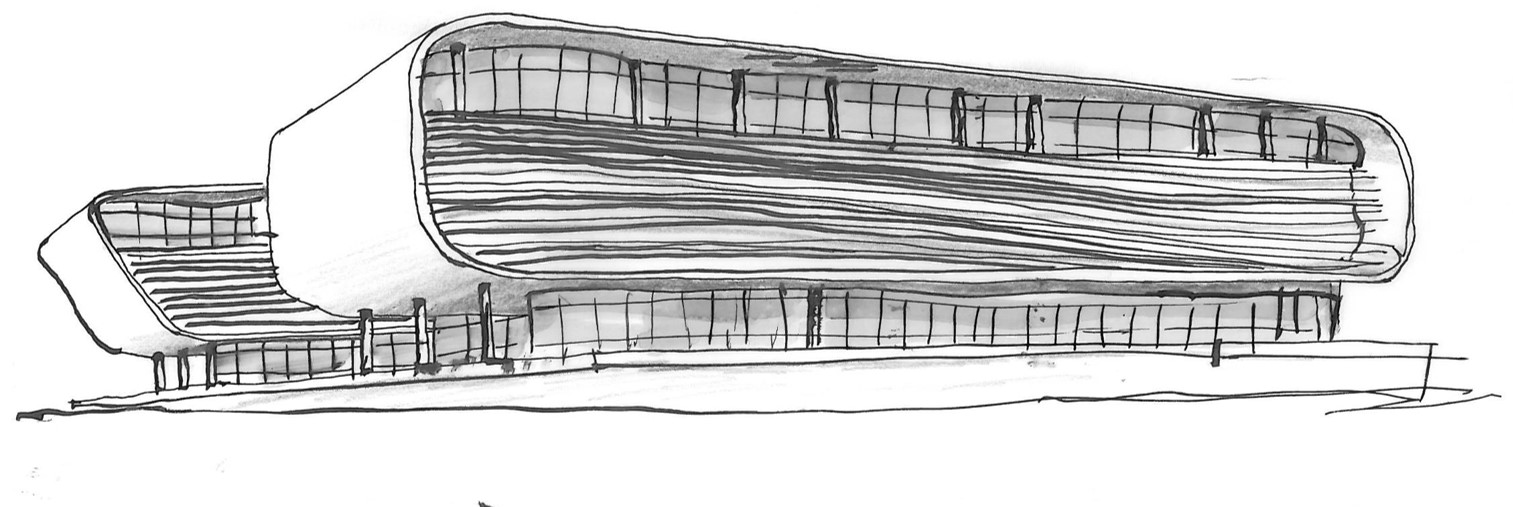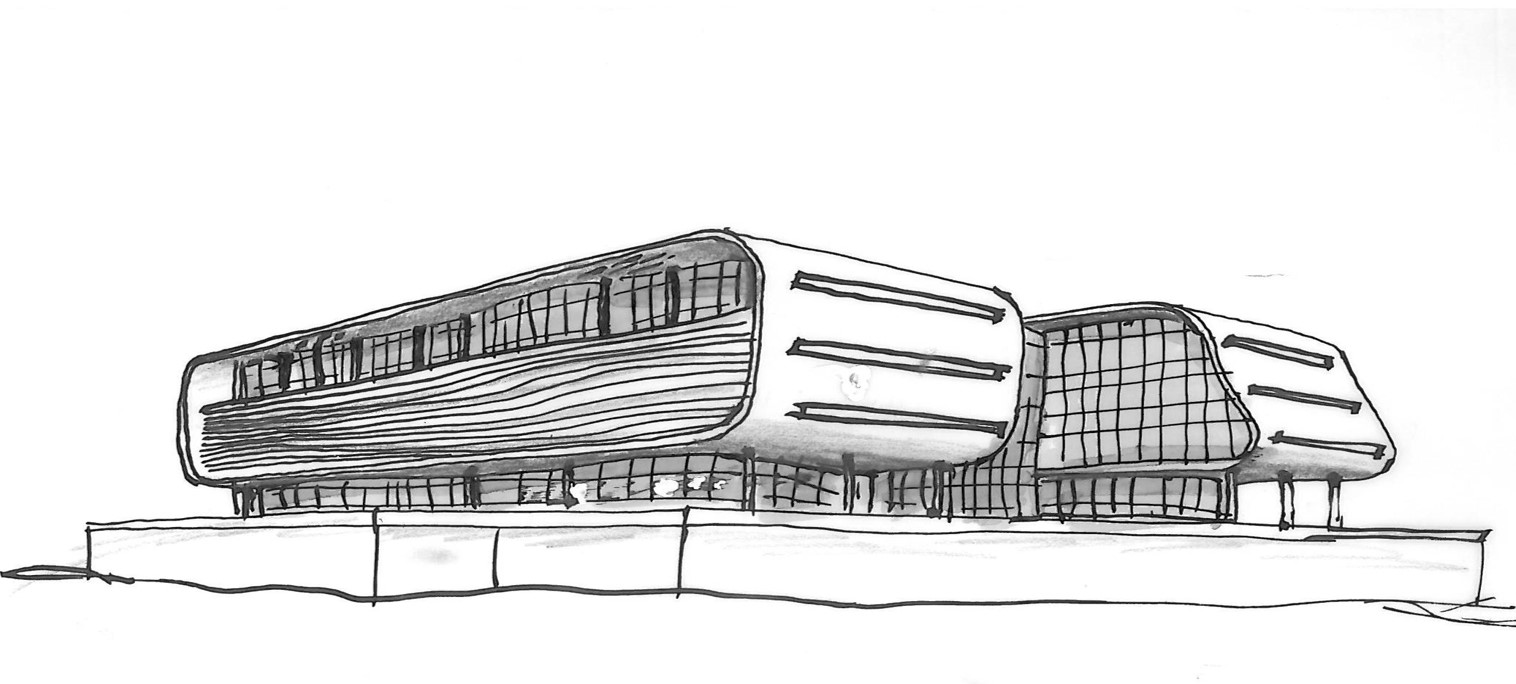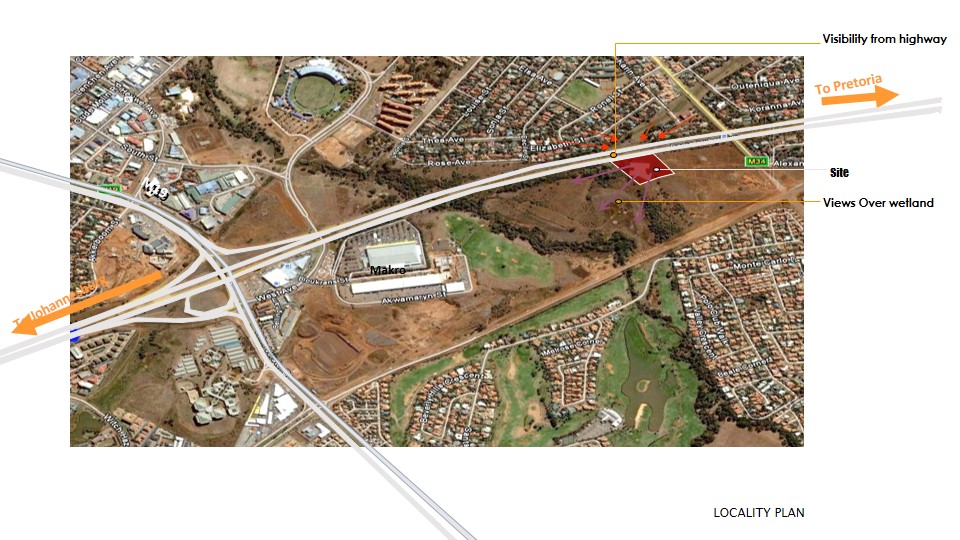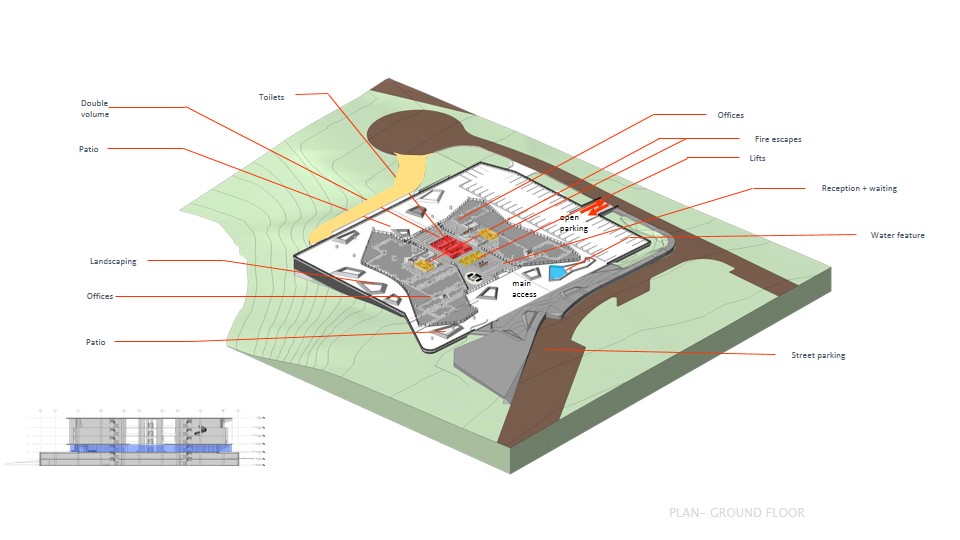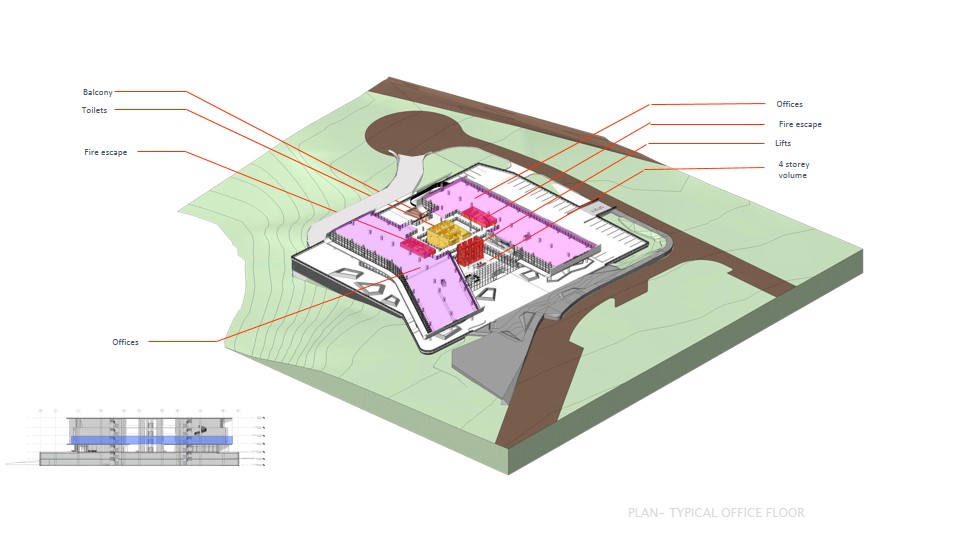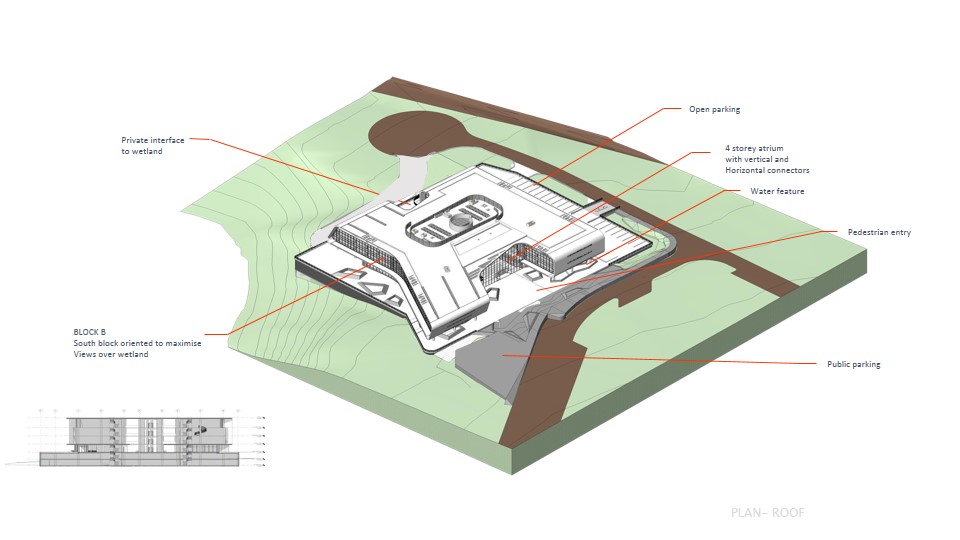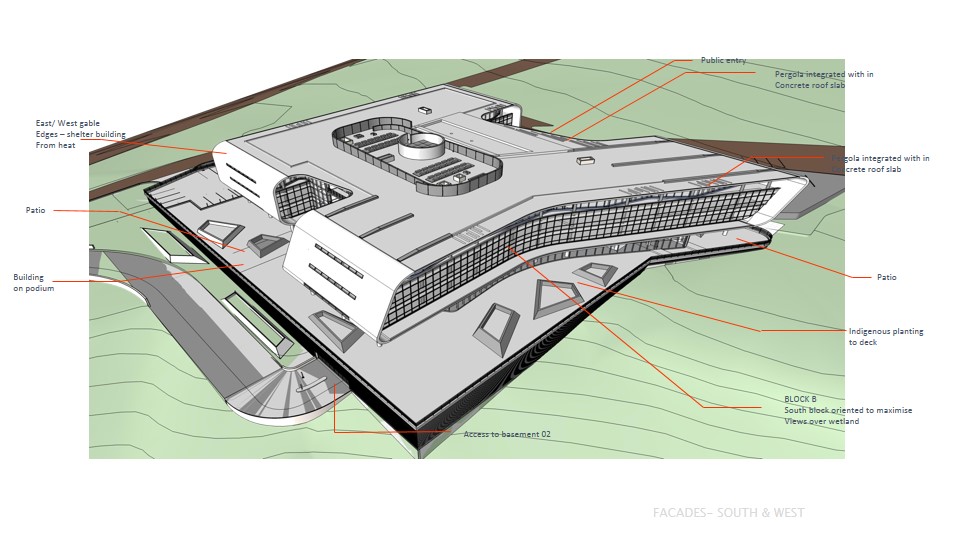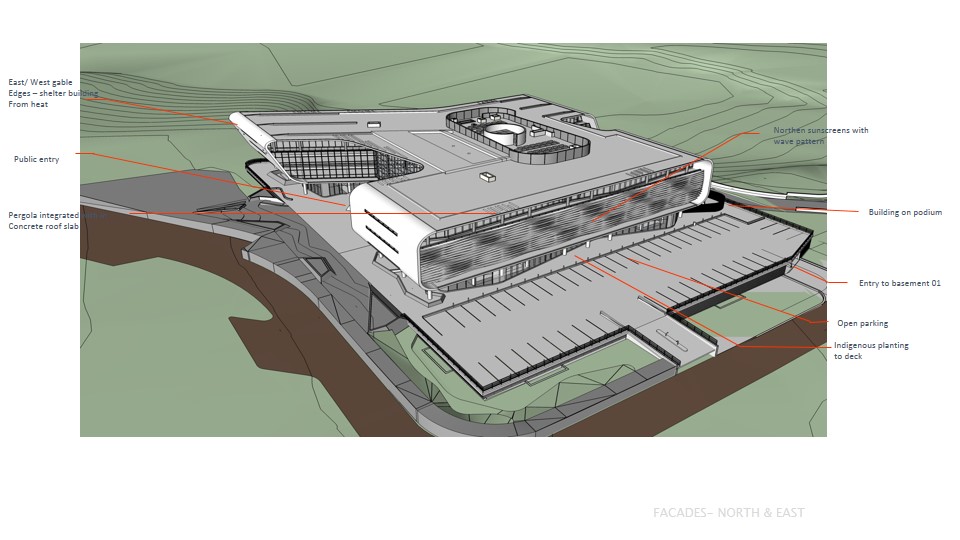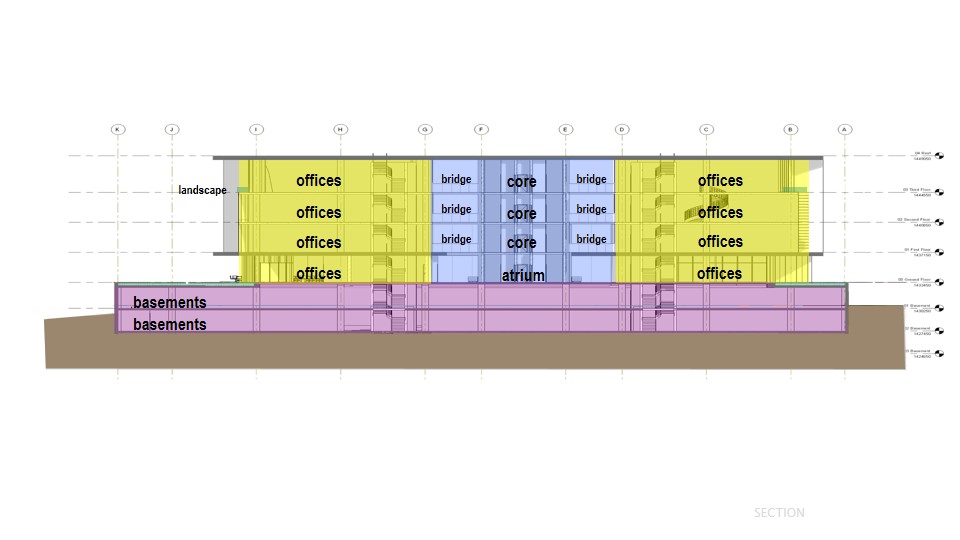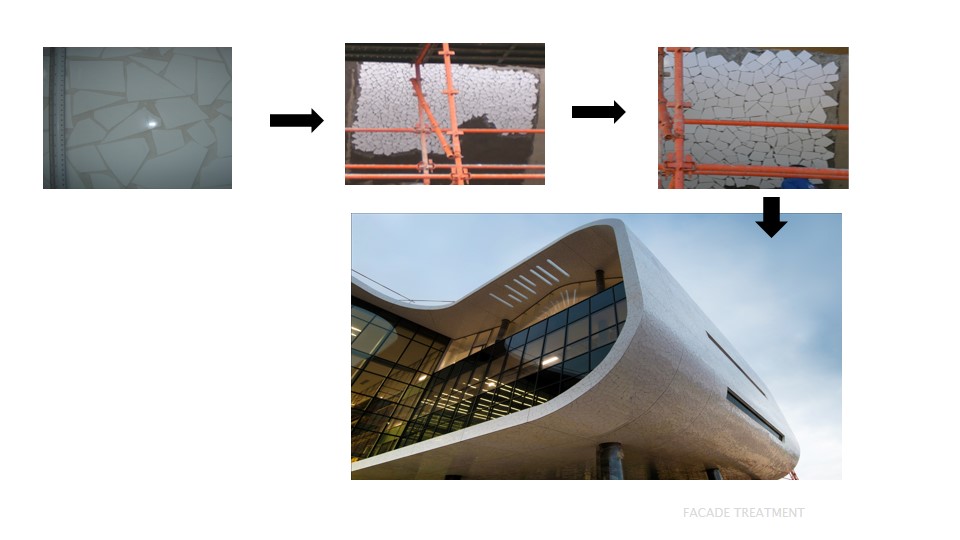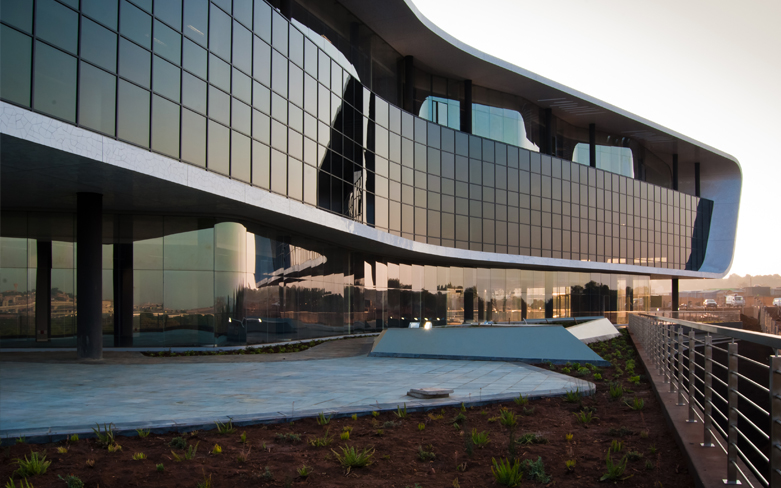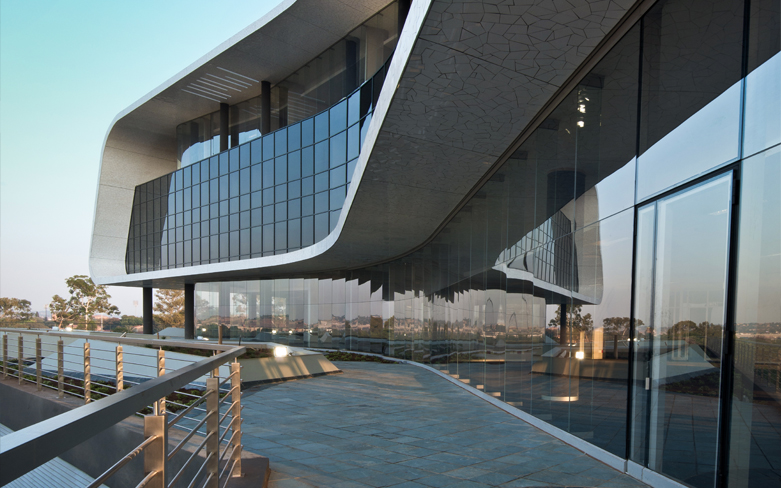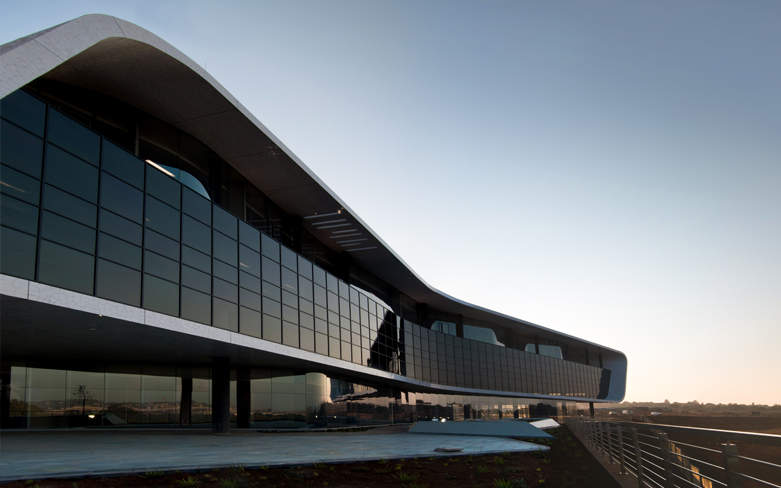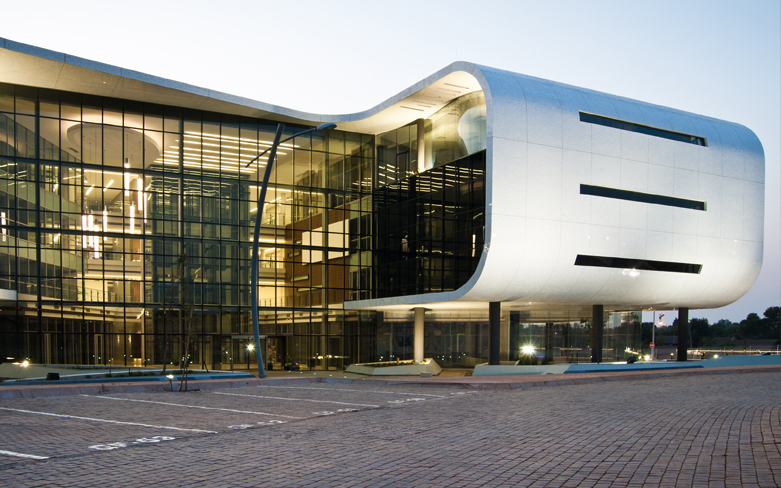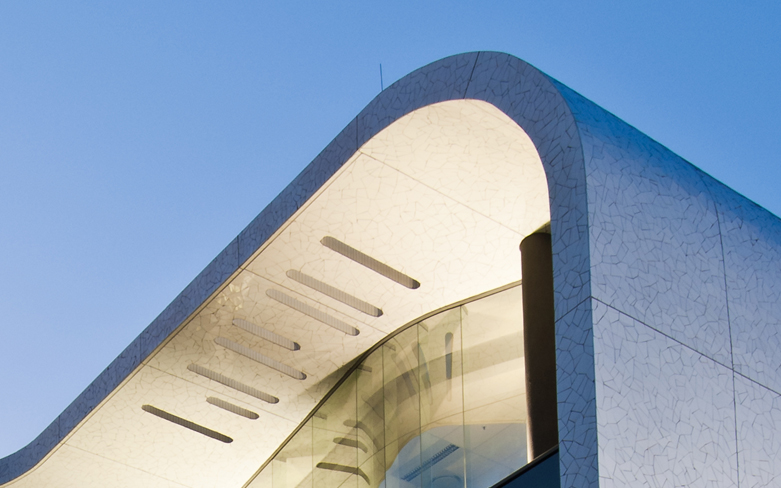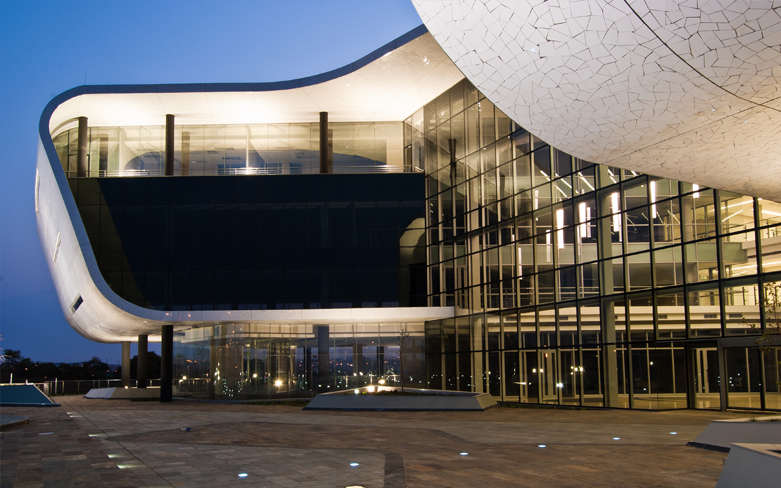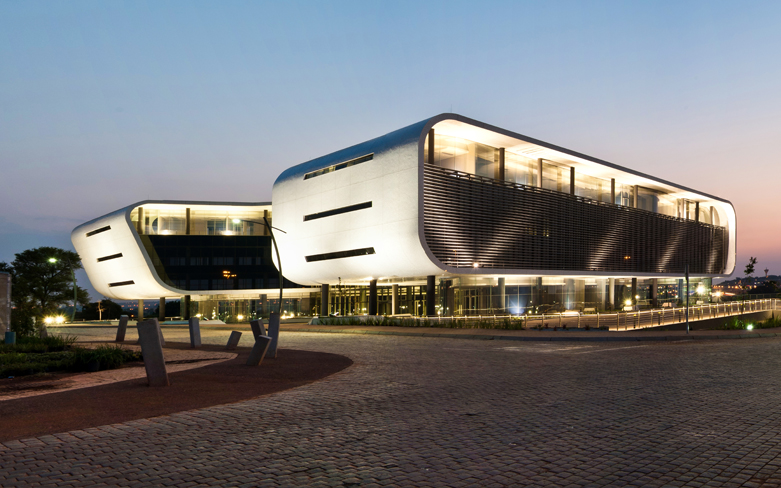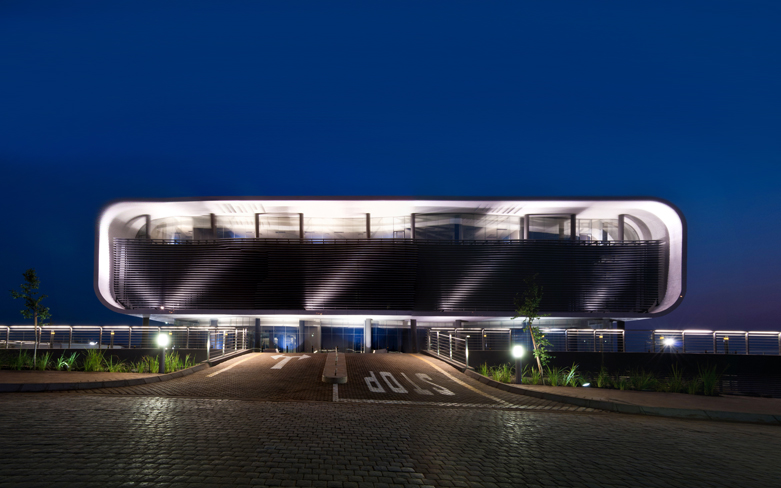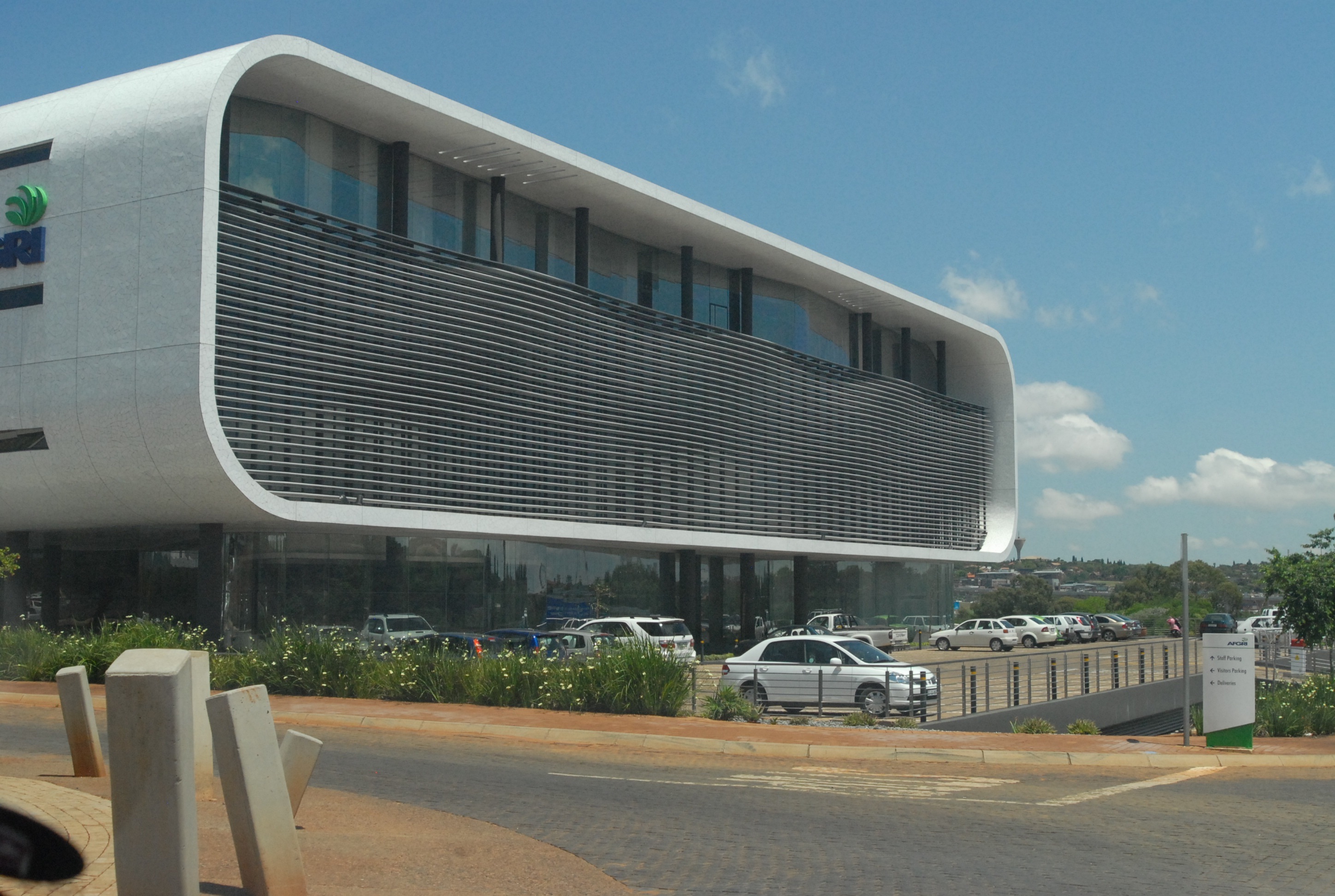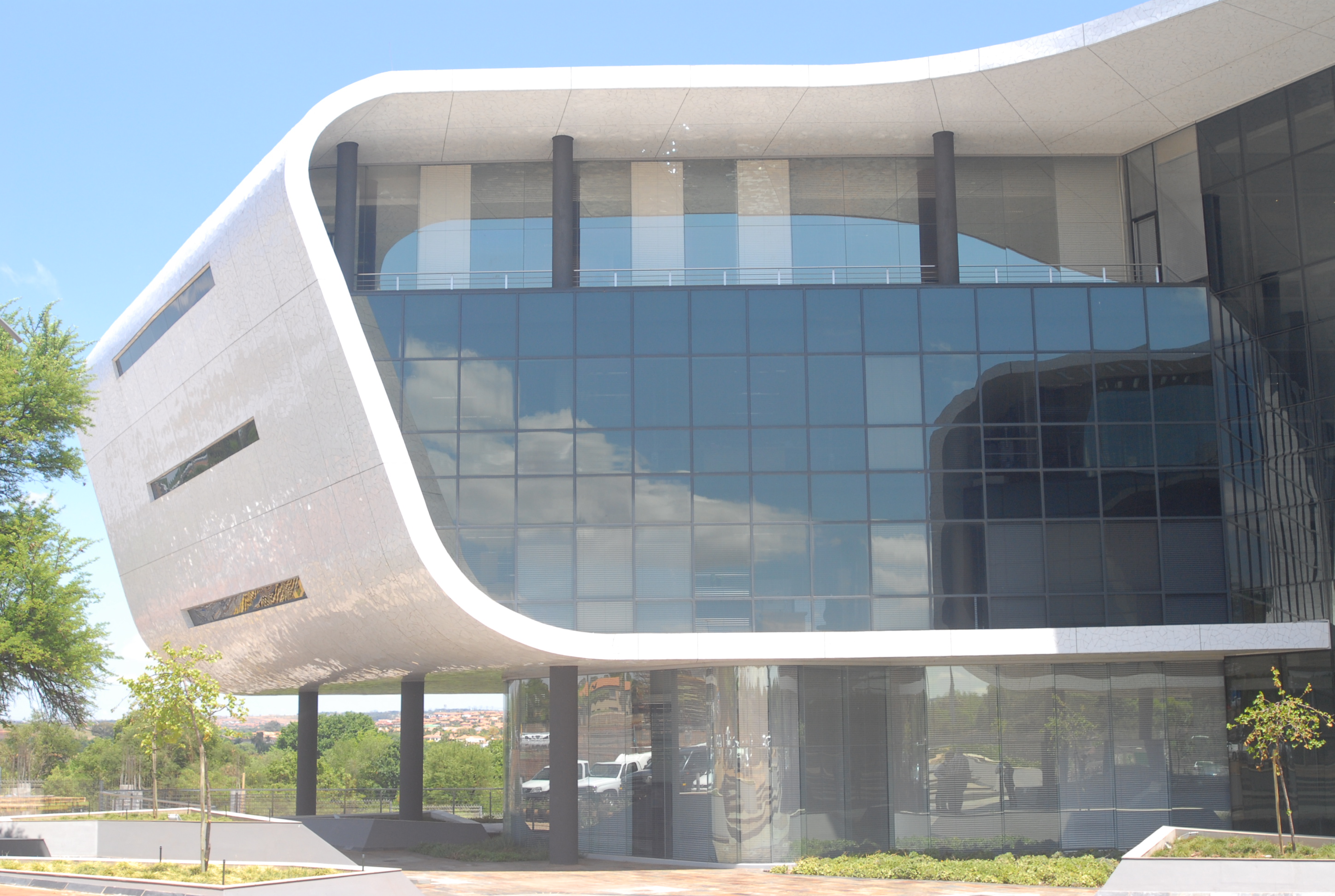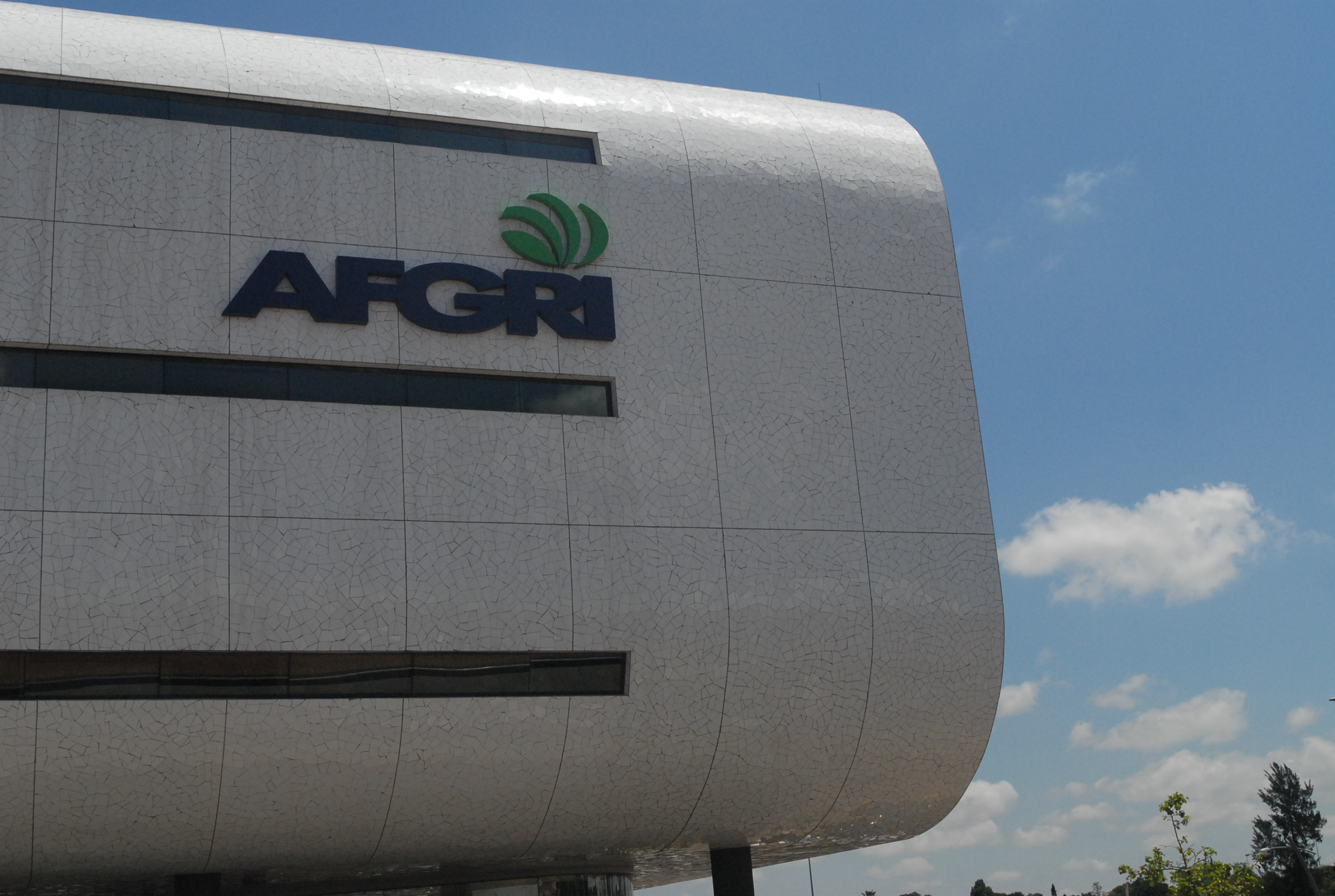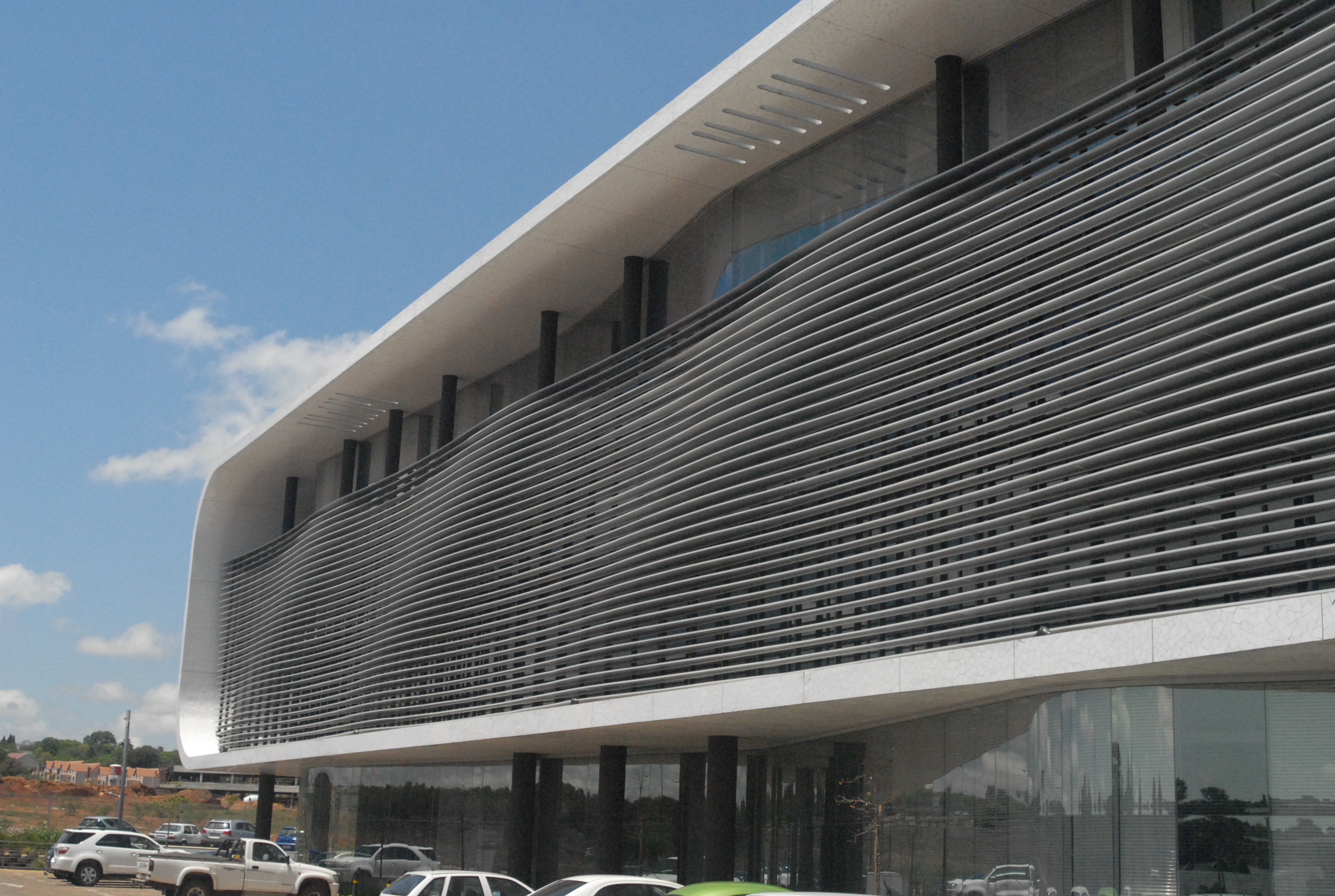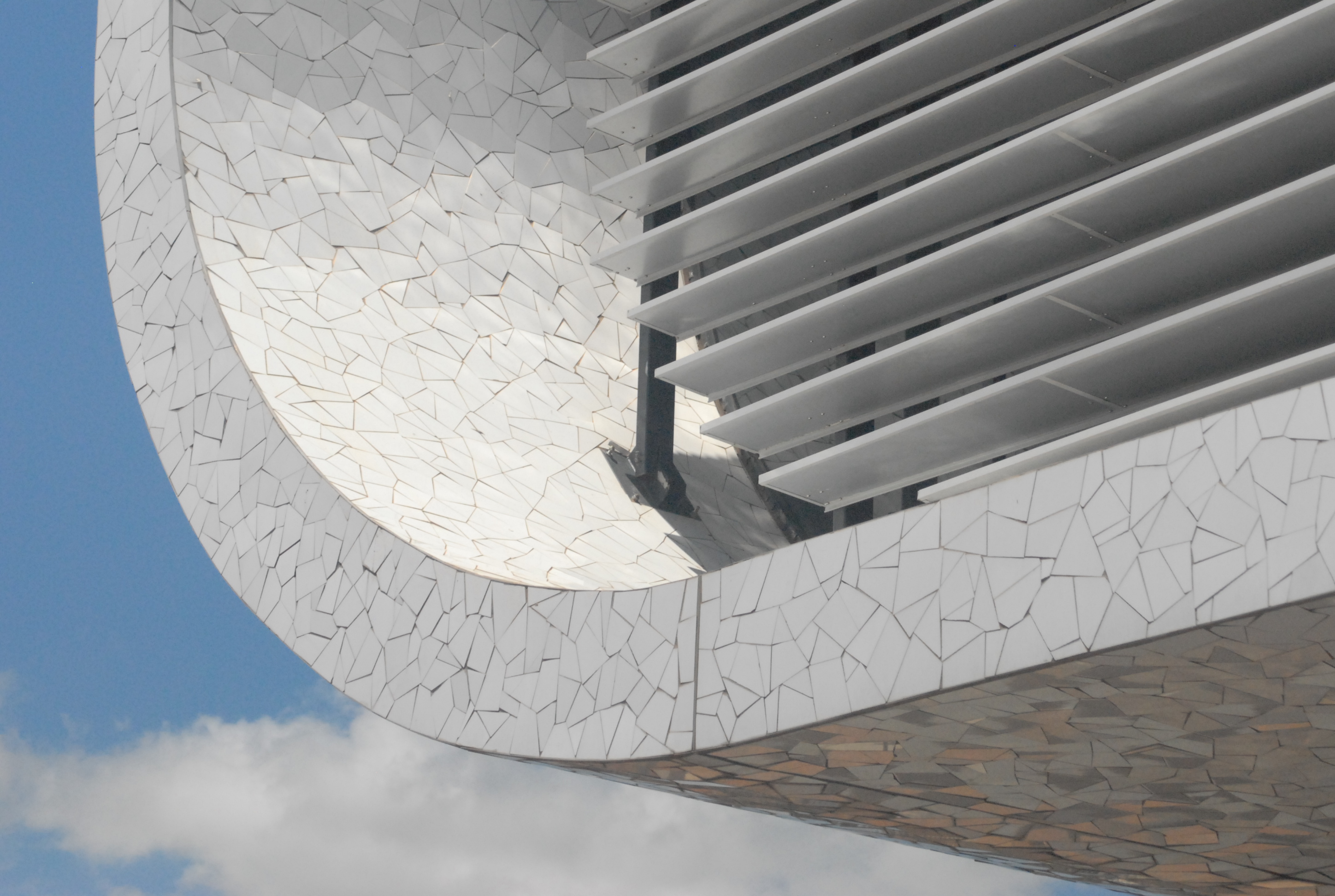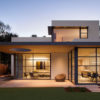The AFGRI building in the South African city of Tshwane, is a fluid form of concrete and glass clad with something totally unexpected- broken tiles.
Designed by SA based Paragon Architects, the building was intended to raise the bar for design of commercial structures and help the AFGRI brand shed it previously old-fashioned corporate image.
Here’s the Architects description, “The building features a four storey atrium with vertical and horizontal connectors, a pedestrian entry that is flanked by the same and a south block oriented to maximize views over the wetland. Set between a busy highway and low-key residential housing, careful consideration was given to how the building would occupy the site. It had to provide pleasing facades on both sides without jarring with the aesthetic of each area, which was solved with a transitional flowing, sculptural form. The ‘soft’ forms of the design distinguish the building from its hard, semi-industrial environment and balance the residential architectural elements.”
The design features strong references to Brazilian modernism, with two office pavilions joined by continuous concrete curves set at distinct angles. Shaded glass lines also permeate the facades, allowing for abundant natural light while shielding the interior from weather and noise. A second skin of aluminium louvers cover glass areas where the building is overexposed to the harsh African sun. The louvers edges form subtle wave-shaped patterns using simple techniques of laser cutting and structural offsets. Office space is elevated on a series of pilotis, separating it from the corporate lifestyle areas on the ground floor. Generous use of glass and light creates a spacious interior for a more comfortable work environment. The building is wrapped in a broken ceramic tile facing or “azulejos quebrados”, popularised by other modernists such as Santiago Calavatra, which creates a defining architectural statement on the landscape of its location.
Here are a few more images via this ablewiki page, which offers some more information about the project.



